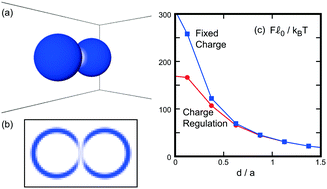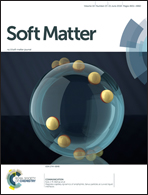Hydrodynamic simulations of charge-regulation effects in colloidal suspensions
Abstract
Self-organization of charged soft matter is of crucial importance in biology. However, it is an extremely complex phenomenon due to dynamical couplings between the hydrodynamic flow, ions, and charges of soft matter. For colloidal suspensions, the coupling between the former two has already been studied by numerical simulations, with the colloid surface charge being fixed. However, the self-organization of colloids and/or the application of an external electric field make the electrostatic environment of each colloid inhomogeneous in both space and time. Thus, this leads to inhomogenisation of the surface charge of each colloid under ionisation equilibrium conditions. This effect is known as “charge regulation” and is of great importance in various electrostatic and electrokinetic phenomena not only in colloid suspensions but also in solutions of biomolecules. However, there has so far been no success in taking the charge regulation effect into account in numerical simulations of colloidal electrokinetics. Here, we extend the fluid particle dynamics (FPD) method to incorporate the charge regulation effect. We present a theoretical formulation of the method and its application to two types of problems, where charge regulation plays an important role: (i) cluster formation of colloid particles and (ii) a single colloid particle under an external field. By these examples, we show not only the importance of considering charge-regulation effects in the self-organization of charged systems but also the applicability of our simulation method to more complex problems of charged soft matter systems.

- This article is part of the themed collection: Electrostatics and Soft Matter


 Please wait while we load your content...
Please wait while we load your content...